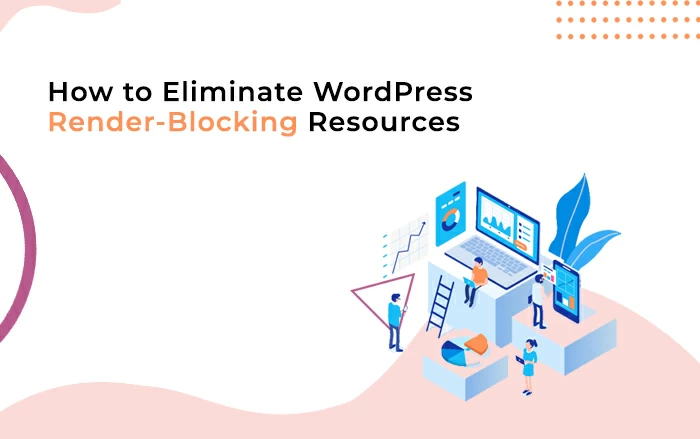Do you want to get rid of render-blocking JavaScript and CSS in WordPress?
Examining your website with Google PageSpeed Insights can suggest means to eliminate manuscripts and CSS that trigger render-blocking. Nonetheless, it doesn’t detail exactly how to do this on a WordPress site.
This short article will show how quickly changing render-blocking JavaScript and CSS in WordPress improves your Google PageSpeed rating.
What are render-blocking JavaScript as well as CSS?

Render block JavaScript and CSS are documents that prevent websites from presenting before these files are packed.
WordPress websites have styles and plugins that insert JavaScript and CSS submits right into the front-end. These manuscripts can increase the filling time of a site or block web pages from showing.
The user’s browser must load these manuscripts and CSS before filling the rest of the HTML code on the page. This indicates that individuals with slow connection speeds must wait a couple of nanoseconds longer before the web page is presented.
These scripts, as well as style sheets, are called render-blocking JavaScript as well as CSS.
Website proprietors are aiming for a Google PageSpeed rating of 100 to resolve this problem and accomplish an excellent rating.
How to prevent render block in JavaScript and CSS?

How to eliminate render-blocking JavaScript
Include a dimension attribute to the button block
First, an attribute must be included to keep the switch’s size. Use the acquainted blocks.registerBlockType Type filter from the previous instance.
The distinction between what we are doing here and what we did previously is that we filter attributes, not supporting things. This snippet alone will not do much, and you will not notice any distinction in the editor. However, having an attribute on size is essential for everyone to work.
There are numerous methods to get rid of JavaScript make blockers. These are discussed carefully in the article Exactly how to decrease the JavaScript parsing process, but below are one of the most vital techniques.
Asynchronous – Enables the HTML parser (for example, the site visitor’s internet browser) to download the JavaScript while the remainder of the HTML is analyzed. This means the parsing is not wholly cut off while the file is downloaded. However, the HTML parser stops performing the script once the download is finished.
Postponed – While the HTML parser downloads the JavaScript, it parses the remainder of the HTML and waits to execute the manuscript until the HTML parsing is full.
The image ‘Expanding with the Internet’ highlights this distinction well.
The advantage of deferral is that scripts are carried out in the order they appear in the code.
Asynchronous does not utilize this technique. Applying ‘asynchronous’ to all JavaScript sources can trigger issues, as sources that depend on the first resource that shows up in the document typically do not work. One of the most common problems caused by asynchronous is that jQuery resources that try to load before jquery.js is contributed to the document will stop working.
How to remove the CSS that creates provide blocks?
Removing the CSS that causes render blocks is much more complicated. This is because care requirements are to be taken to ensure that the CSS needed to render the flattened web content is not kept back. The ideal format is as adheres to.
Determine the styles required to show the web content above the layer and give these designs in line with the HTML code.
Utilize the media attribute of the link aspect, which tons CSS documents, to identify conditional CSS sources that are just required on details devices and in certain conditions.
The continuing to be CSS sources require to be filled asynchronously. This is generally done by including ‘lazy’ or asynchronous JavaScript. This is the domain name of the front-end engineer. If you are a front-end engineer, however, many people are not. This write-up is about WordPress, but with the right plugins, you can at least substantially lower the number of JS and CSS resources that cause rendering blocks.
Conclusion
The render-blocking feature reduces page load times on WordPress websites by delaying making the web content above the fold by the site visitor’s web browser until the web browser downloads submit that is not called for right away.
To permit visitors to fill the noticeable parts of the web page quicker, you need to slow down the loading of resources that are not quickly called for.
One method to get rid of WordPress preview resources is using prefabricated plugins.
A free option combines two plugins from the same programmer, Autotomize and Async JavaScript.
For a fee, you can utilize WP Rocket, which offers a total combination with Kinsta and can assist you with various other WordPress efficiency setups.
Do you have other questions about how to remove the WordPress preview blocker? Let us know.
Conserve money and time and also enhance website performance.
Direct assistance from professionals. Contact us for website maintenance.
Enjoyed this blog post? For more please visit WpMaintenance Service.


